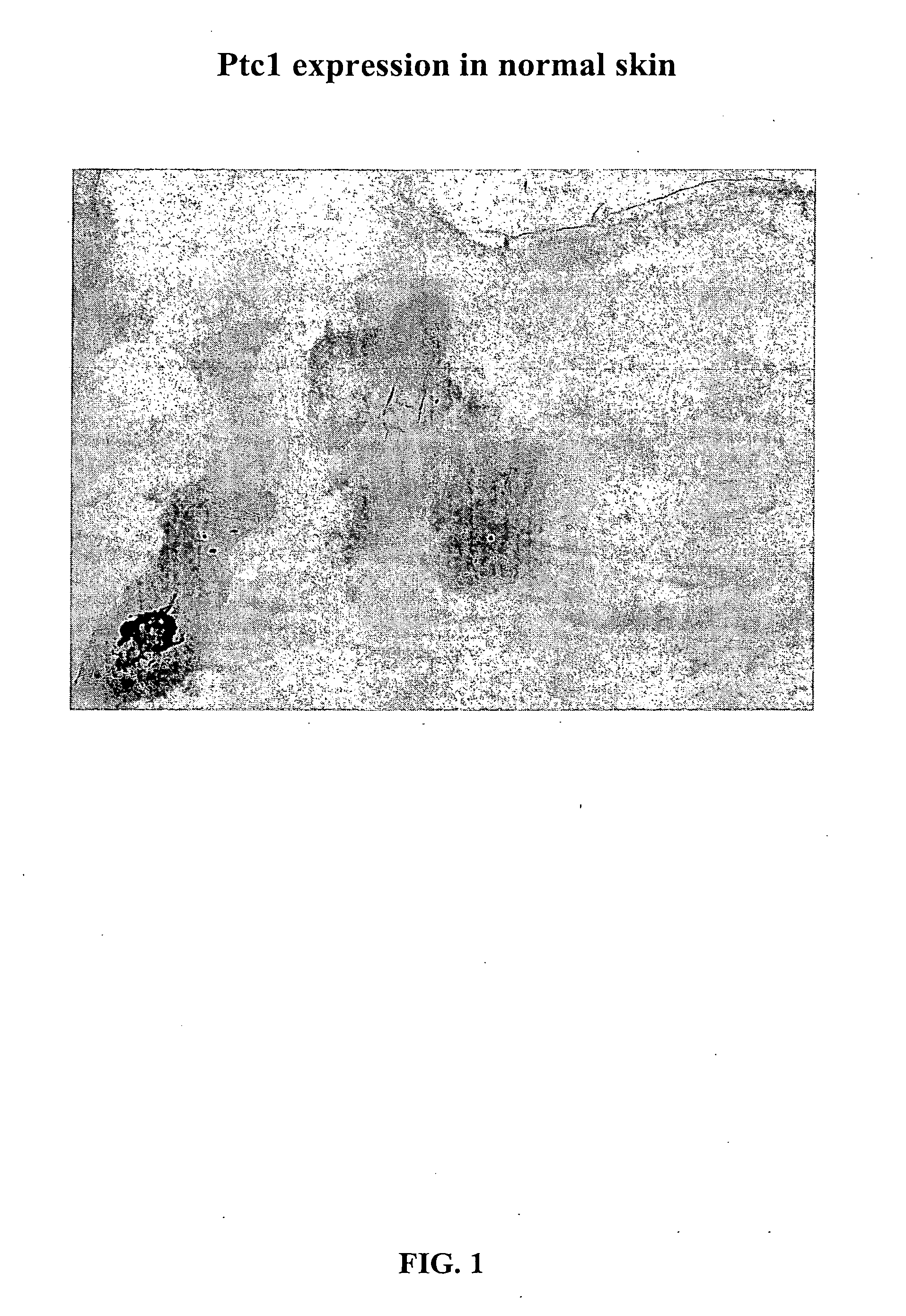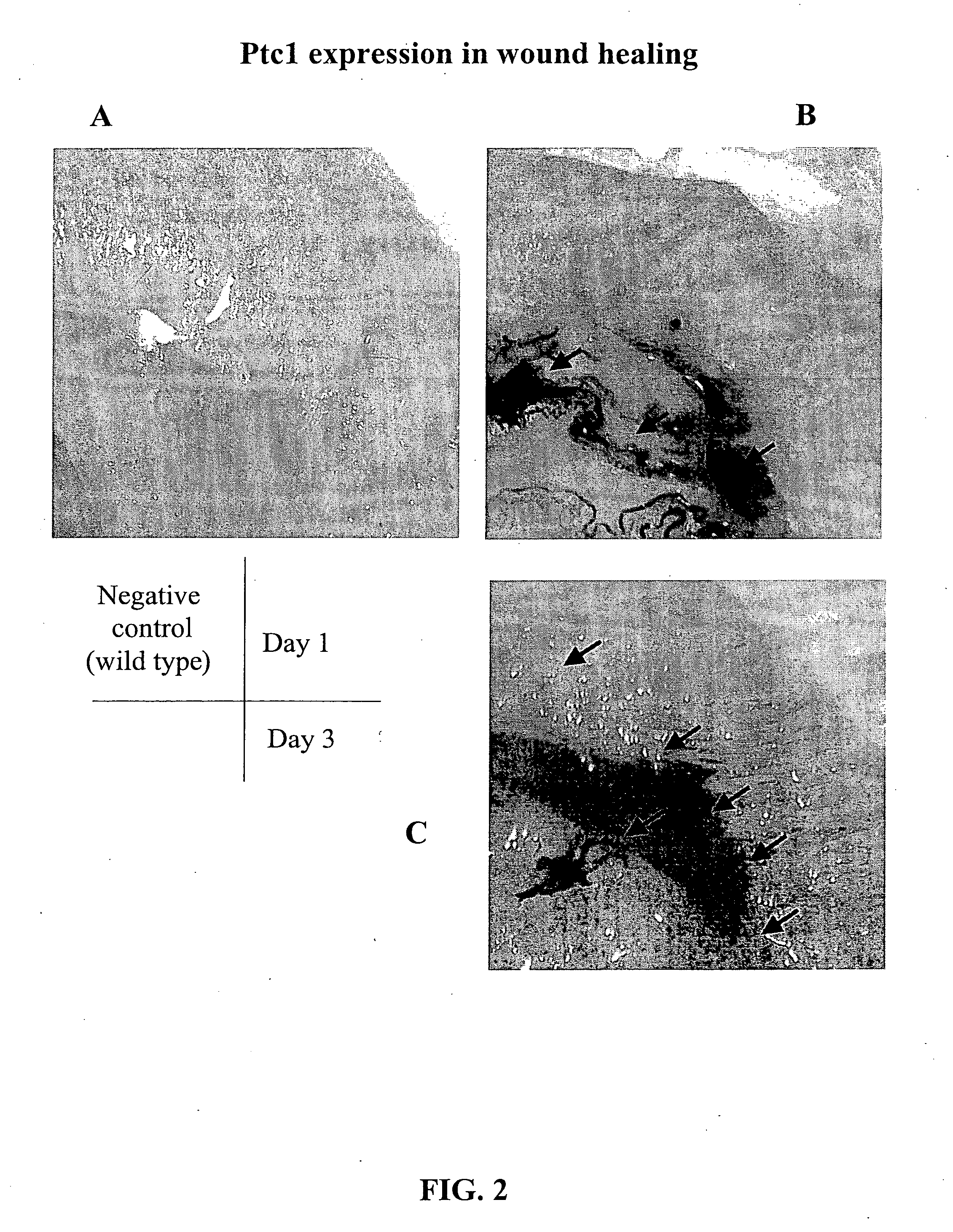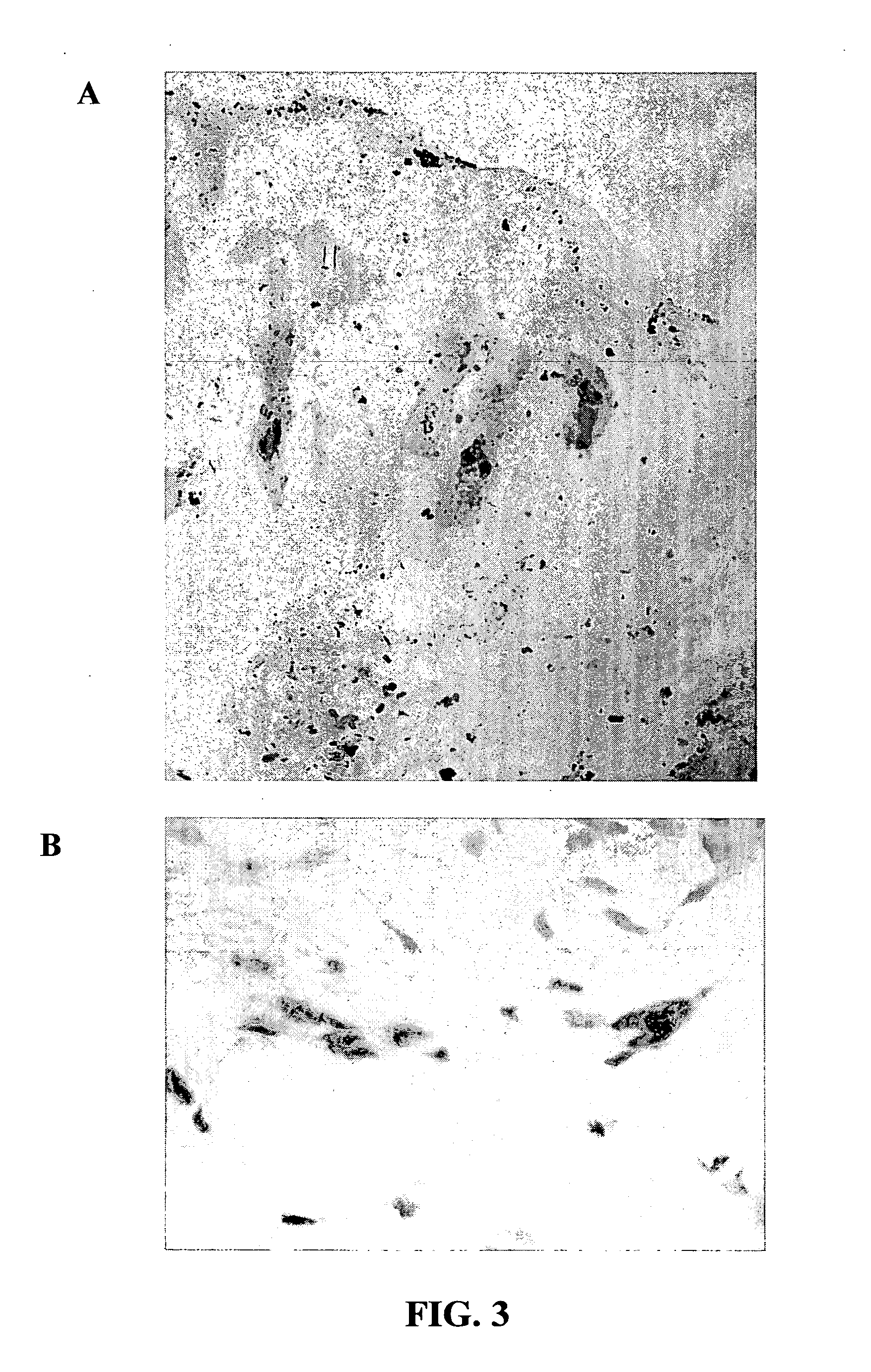Morphogen compositions and use thereof to treat wounds
a morphogen composition and composition technology, applied in the field of morphogen compositions, can solve the problems of skin wounding condition, scar development, scar development, etc., and achieve the effects of facilitating a downstream cascade of one or, promoting wound healing, and preventing, treating or reducing the severity
- Summary
- Abstract
- Description
- Claims
- Application Information
AI Technical Summary
Benefits of technology
Problems solved by technology
Method used
Image
Examples
example 1
Preparation of Human Shh Plasmid
[0101] The amino-terminal domain of human Shh was selected as coding sequence to make a Shh-plasmid using mammalian expression vector pCMV-ScriptPCR (Stratagene). The selected sequence of the Shh cDNA is shown schematically in FIG. 12. This plasmid of human Shh (phShh) is a 4,878-bp plasmid that contains the 600 bp amino terminal domain coding sequence of human Shh. Expression of the Shh gene is modulated by the presence of cytomegalovirus promoter sequences. Downstream from the Shh cDNA is an SV40 polyadenylation sequence. The plasmid also contains a gene that confers neomycin / kanamycin resistance to the host cells.
example 2
Experimental Animals
[0102] C57BLKS / J-m+ / +Leprdb mice (db / db mice), C57BLKS / J (wild-type of db / db mice), GFP-transgenic (Tg) mice, and C57BL / 6 (wild-type of GFP Tg mice) were obtained from Jackson Laboratories (Bar Harbor, Me., USA). Animals of the db / db strain are leptin receptor-deficient diabetic mice, and are an established model of deficient wound healing associated with diabetes [14]. NLS-Ptc1-lacZ mice or their wild type littermates were kindly provided by Dr. MP Scott (Stanford University). We also used BMT mice created by transplantation of BM from GFP transgenic mice. BMT mice were prepared as previously described with minor modifications [15, 16]. BM cells were collected from femurs and tibias of donor GFP Tg or wild-type B6 mice by aspiration and flushing. Recipient mice were lethally irradiated with 12.0 Gy, and BMT from the transgenic mice was performed. At 4 weeks after BMT, by which time the bone marrow of recipient mice was reconstituted with the transplanted bone m...
example 3
Topical Application of phShh and Methods for Evaluation of Wound Healing
[0105] DNA / methylcellulose pellets were prepared, as described previously [17]. Briefly, One hundred μg of phShh or LacZ plasmid was diluted in ddH2O (20 μl) and mixed with an equal volume of 1% methylcellulose prepared in ddH2O. This solution was then allowed to dry, forming a pellet. Immediately after wounding, the dehydrated pellet containing plasmid was applied to the wound.
[0106] All mice used in the wound healing assays were between 8 and 12 weeks of age at time of wounding. Mice were placed individual cages and subjected to wounding, performed as described previously [18]. After induction of deep anesthesia by intraperitoneal injection of sodium pentobarbital (160 mg / kg IP), full-thickness excisional skin wounds were made using 8-mm skin biopsy punches on the backs of mice. Immediately after wounding, a methylcellulose pellet containing phShh or control lacZ plasmid was applied to the wound. The wound w...
PUM
| Property | Measurement | Unit |
|---|---|---|
| Composition | aaaaa | aaaaa |
| Cell proliferation rate | aaaaa | aaaaa |
Abstract
Description
Claims
Application Information
 Login to View More
Login to View More - R&D
- Intellectual Property
- Life Sciences
- Materials
- Tech Scout
- Unparalleled Data Quality
- Higher Quality Content
- 60% Fewer Hallucinations
Browse by: Latest US Patents, China's latest patents, Technical Efficacy Thesaurus, Application Domain, Technology Topic, Popular Technical Reports.
© 2025 PatSnap. All rights reserved.Legal|Privacy policy|Modern Slavery Act Transparency Statement|Sitemap|About US| Contact US: help@patsnap.com



